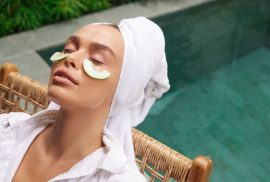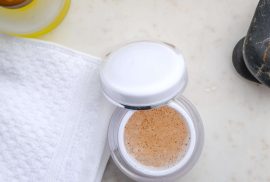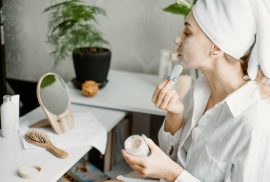Why It’s Time to Ditch Your Loofah
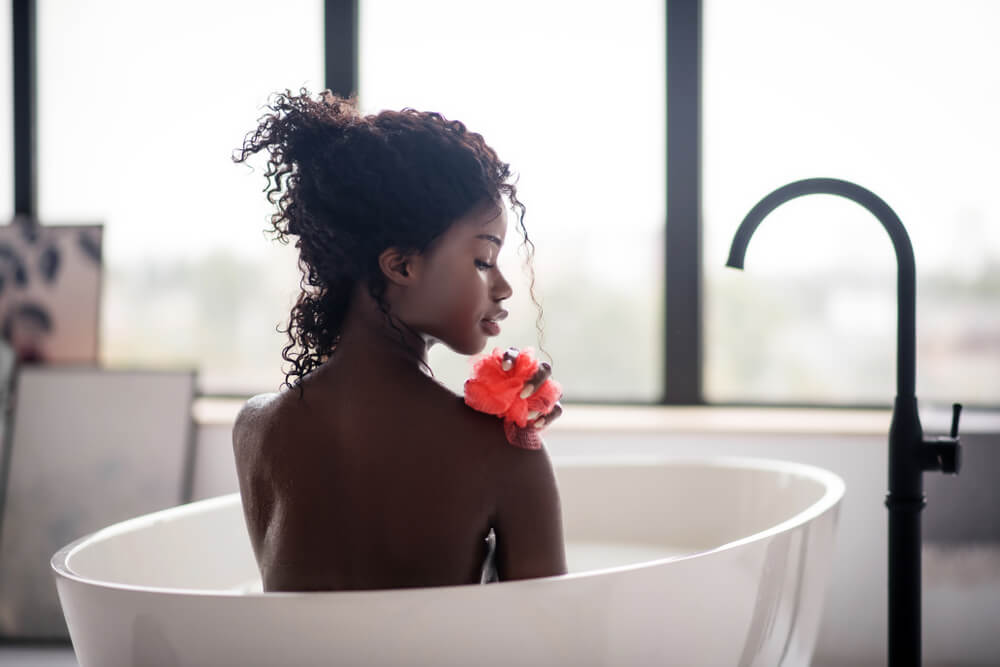
We’ve all learned about the loofah growing up. You might even have had one in your bathroom at home!
As a way to exfoliate and rid the body of dead skin, loofahs are pretty straightforward—you just have to use it to scrub the body, and you’ll feel incredibly clean right after.
But… what if we told you that’s actually not the case?
We hate to break it to you, but loofahs may actually be doing more harm to your skin than you think.
From stripping the body of its natural oils to introducing bacteria to the body, there are numerous reasons why it’s time for you to ditch your loofah.
In this article, we’ll be talking all about the not-so-good things you’ve never learned about loofahs before. We’ll also be giving you cleaner, safer alternatives you can try!
Let’s dive in.
What are Loofahs Made Of?
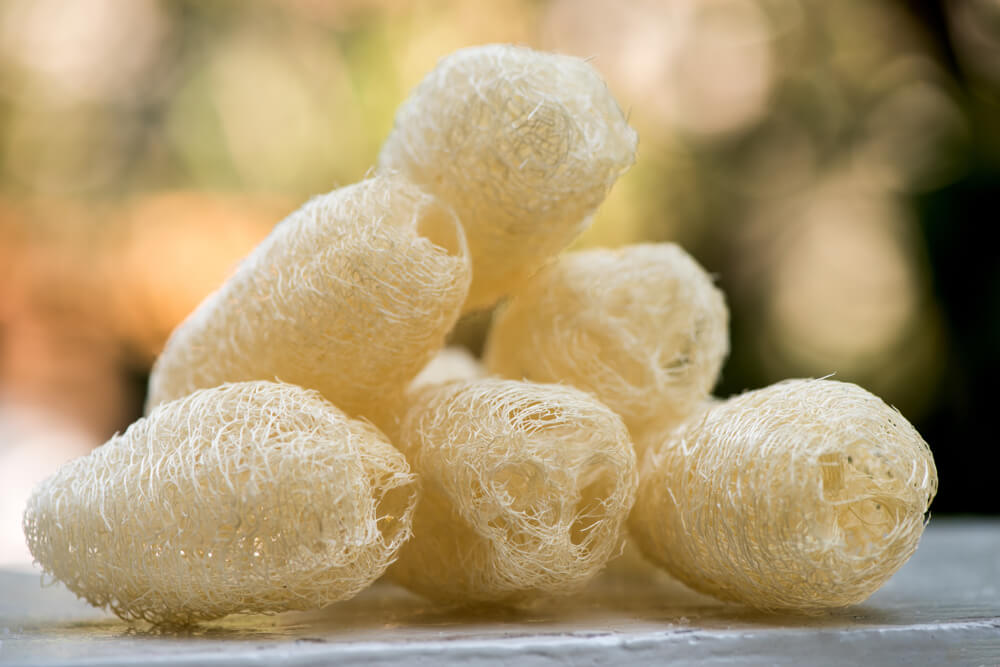
To start with, let’s review what loofahs are and what they’re made of.
Loofahs look like sponges, but with a coarse and rough exterior. When used on the body, you can certainly expect the loofah’s abrasive exterior to scrub off the dirt from your body. The friction when scrubbing your skin with a loofah also makes it a viable tool for exfoliating the skin.
But where does loofah come from, you may ask. And is its spongy yet coarse texture real?
Well, on the one hand, there’s synthetic loofah — factory-produced loofahs that don’t necessarily use organic, natural ingredients. But, loofahs are also naturally occurring in the environment! That’s likely how they were first used and discovered as well.
They’re not from the ocean, though, like we all probably thought.
Instead, natural loofahs are derived from plants. Specifically, it comes from a subtropical gourd from the cucumber family. Loofahs are usually made out of the L. aegyptiaca or L. acutangula species from the genus Luffa—probably where the name originated from in the first place.
But, as appealing as an all-natural body cleanser sounds, it’s actually not all that good.
In fact, rather than cleansing your body and ridding it of dirt, loofahs might do the opposite!
Let’s get to this point in more detail.
Here’s Why You Should Consider Ditching Your Loofah
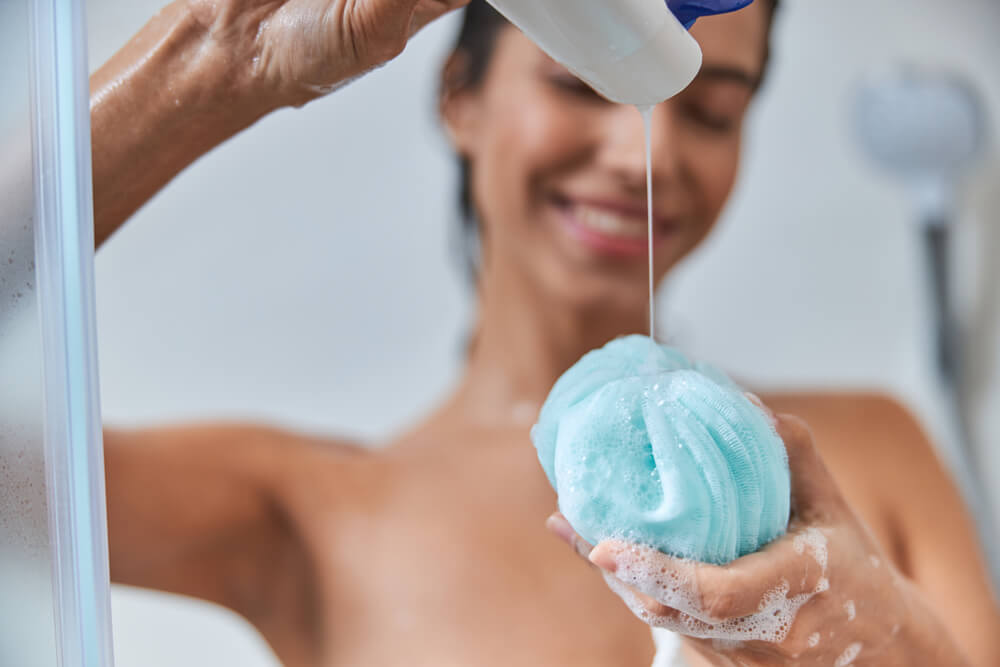
You should reconsider using your loofah for two major reasons — first, they can introduce bacteria and other dirt into your skin and pores… a recipe for a fungal or bacterial infection. And second, they’re actually harsh on your skin.
That may sound counterintuitive, especially when loofahs are supposed to cleanse your skin. But it’s the truth!
Here’s everything you have to know about this matter:
Loofahs are riddled with dirt and bacteria
The biggest problem with the loofah is that it can be a breeding ground for bacteria.
Loofahs most certainly can scrub off the dirt in our skin. The problem, however, lies in its structure.
We know what loofahs look like—they’re riddled with small holes, and they’re made of intertwining natural material. Now, this poses a problem when you consider just how many nooks and crannies the scrubbed off dirt, grime, and oil can accumulate in.
But it even gets worse.
Think about just how exactly you clean and maintain your loofah. Do you wash it with soap? Put it outside to air dry? Or do you simply keep it in the bathroom, where it’s often damp?
Now, that’s another concern.
These loofahs, which have all kinds of dirt and oil stuck in their different crevices, usually don’t get to dry properly. But, that’s exactly the kind of environment that allows bacteria to thrive.
Because loofahs are often damp, fungus and bacteria can grow and grow on your loofah until your next use. Considering just what things get stuck on your loofah, it’s no surprise that it’s going to be a breeding ground for all sorts of bacteria.
So, when you do use your loofah after some time, what you end up doing is introducing all sorts of fungi and bacteria into your body. If you have an open cut or wound, you’ll be at a huge risk of infecting these wounds. Not to mention, hot showers tend to open your pores, too — so these are also at risk of an infection upon contact with the dirty loofah!
In fact, a study in 1994 already established these claims. This article, published in the Journal of Clinical Microbiology, found that the bacterium Pseudomonas aeruginosa, known to cause disease in animals, can thrive, and even be transmitted, through loofahs.
That doesn’t sound so hygienic now, does it? Well, there’s yet another reason why it’s time to ditch your loofah already.
Loofahs are Too Harsh to the Skin
Loofahs function as a physical exfoliant — that is, a mechanical agent that gets rid of the buildup of dead skin cells, oil, and keratin, which can clog pores and lead to dull-looking skin. Although the skin has a way of renewing itself, exfoliants aid in ensuring that grime and dirt don’t accumulate in the skin’s pores.
That sounds well and good, but overdoing exfoliation can harm the skin.
And, unfortunately, loofahs fall under the category of physical exfoliants which can actually do more than just get rid of accumulated dead skin cells in the body.
Because of their coarse and rough texture, loofahs can irritate the skin and even create tiny tears all over it. This is especially true when scrubbing with a loofah is done vigorously, which most of us tend to do, thinking that it might actually make our skin better!
What’s more, the damage doesn’t stop there.
Loofahs may also strip the skin of its protective oils, and even impair its moisture barrier. The result? The skin gets dry, dehydrated, and more prone to damage. Without its natural hydration, the skin may easily get irritated, and even have increased sensitivity to a wide range of products.
An impaired protective barrier and micro-tears in the skin, coupled with a bacteria-laden loofah being used all over body? A recipe for disaster.
That’s why, despite the ease and convenience that they provide, loofahs aren’t your best bet if you’re looking for a failsafe way to exfoliate your skin. Instead, you can perhaps look at other kinds of exfoliants that are gentler and more beneficial to your body’s largest organ.
Switch to These Loofah Alternatives
We use loofahs primarily for exfoliation… and there are extremely better options out there. So, go bid your loofah goodbye and instead use these trusty alternatives:
Body Scrubs
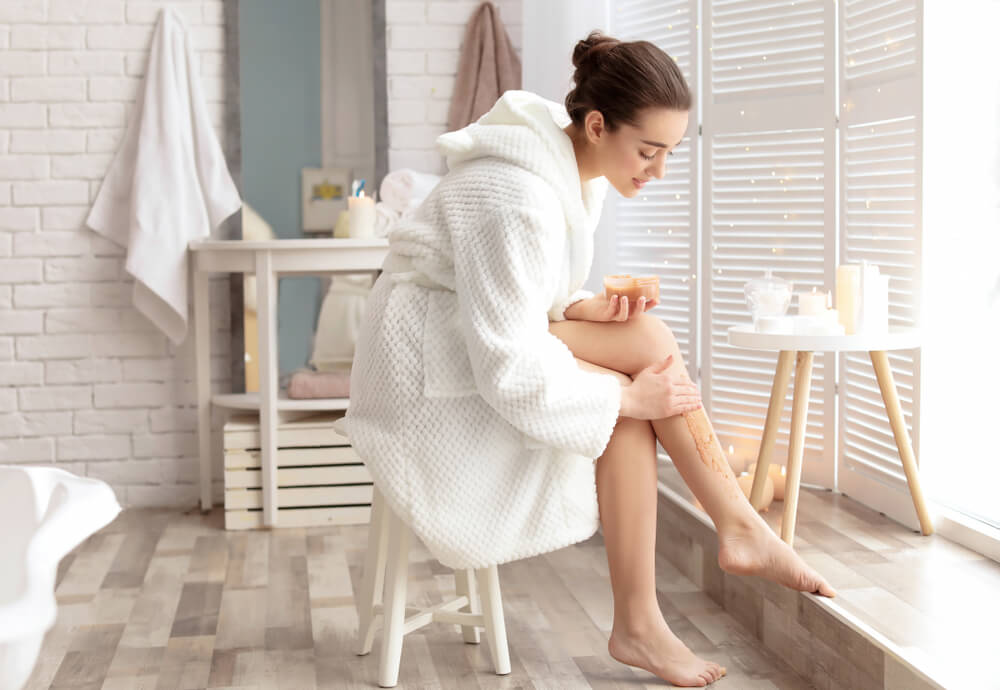
Body scrubs are definitely one of the best physical exfoliants on the market. They’re easy to use, they have great benefits for the skin, and they’re affordable and easily available.
Body scrubs are typically formulated with abrasive ingredients, such as sugar or salt. These particles, when rubbed against the skin, help scrub away the dead skin cells. Some scrubs even melt in water after a long time, which ensures that they won’t get stuck in areas of your body if you don’t wash them off well enough.
Scrubs generally show results right away—as the dead skin layer is sloughed off, you’ll definitely notice the visible changes in your skin right away. They’re also great for scrubbing rougher areas of the body, such as knees and elbows.
However, not all scrubs are created equal!
Some body scrubs are more than just exfoliants. There are scrubs formulated with different ingredients that target different concerns in your body. Some scrubs can be more hydrating to the skin, while others offer a brighter look.
Consequently, some scrubs can still be a bit on the harsh side, especially if they’re formulated with large particles with sharp edges. Using these too frequently and too vigorously on the skin can still lead to micro-tears.
If you’re not sure which body scrub to start with, you definitely won’t go wrong with Vivo Per Lei’s body scrubs. These scrubs are gentle to the skin, but still pack a punch!
Our Espresso Coffee Body Scrub, for instance, is formulated with an extra kick of caffeine to aid in increasing the feel of skin firmness. Alternatively, if you’re after the brightening and whitening finish that citrus fruits can offer, we have our Citrus Glow Exfoliating Body Scrub to address your concerns!
These are just two of the many selections of body scrubs that Vivo Per Lei has to offer. Created with different ingredients to target various skin issues, Vivo Per Lei’s body scrub collection can just be the answer to your skin’s concerns.
Chemical Exfoliants
Physical or manual exfoliation is a bit straightforward — you simply use abrasive particles to slough off dead skin cells and other particles. Chemical exfoliation, on the other hand, is a bit different.
Chemical exfoliants typically contain water- and oil-soluble acids called alpha hydroxy acids (AHAs) and beta hydroxy acids (BHAs). AHAs destroy the bonds holding dead skin cells together, making it easier for the skin to shed these dead particles away. Meanwhile, BHAs penetrate deep into the skin to rid it of impurities.
Chemical exfoliation therefore targets the same things as physical exfoliants, but rather than scrubbing them away, it breaks off these cells from the inside.
There are different products in the market that can be used for chemical exfoliation. There are soaps and serums formulated with these acids to help exfoliate the skin effectively.
However, a word of caution — very sensitive skin types may not respond well to acids, especially in high concentrations. It’s best to do a patch test first if you’re eyeing a chemical exfoliant for your body.
Washcloths
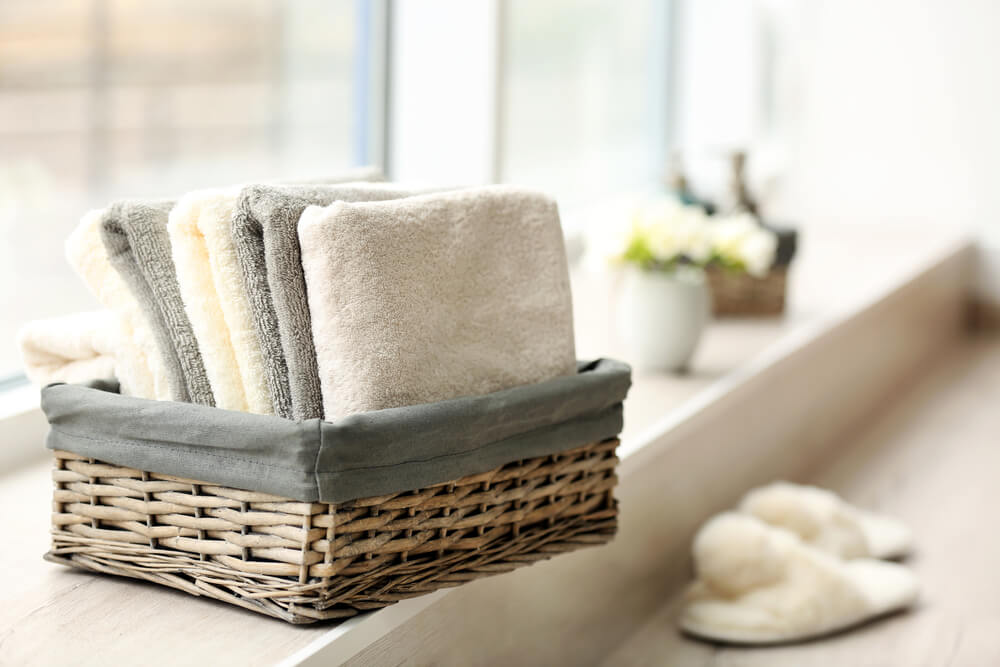
Can’t get behind the idea of using scrubs or chemical exfoliants on your body?
Not to worry! Washcloths are another alternative you can try.
Similar to loofahs in principle and use, washcloths are physical exfoliants that use an abrasive cloth to scrub off the layer of dead skin on the body.
However, washcloths face the same problems in hygiene that loofahs do… so what makes them different?
The thing is, washcloths are relatively easier to clean and maintain than loofahs. You only have to wash them with soap and water after every use, and leave them to dry.
On the other hand, ensuring loofahs are clean isn’t as straightforward. Due to their structure and design, simply washing loofahs with soap and water won’t do the trick. You may have to boil it after every use just to ensure bacteria won’t grow.
That makes washcloths more hygienic and convenient than loofahs!
What to Do Post-Exfoliation
Now that you have alternatives to loofahs for a better exfoliation experience, you have to know that it actually doesn’t stop there.
After exfoliating, the best way to keep the skin feeling healthy is to moisturize and hydrate it!
Not sure what products to pick to hydrate your skin? You’ll never go wrong with Vivo Per Lei’s products. With body butters, lotions, and moisturizing creams to choose from, you’ll definitely get the best possible hydration experience for your skin.
Body butters are a great source of moisture, and are great for dry or dehydrated skin. If you’re looking for extreme moisture, this is the best choice for you.
Alternatively, if you’re not a fan of the sticky feeling you get after using body butters, you may reach for a lotion or moisturizer instead. This is also a good option if you’re prone to sweating, or if you’re living somewhere with a humid climate.
Whatever you choose, remember that you can never go wrong with giving your body the hydration it needs!
Well, that’s all you need to know about using loofahs, and why they’re damaging your skin more than you think!
It’s a bit of a surprise, and it might need more getting used to, but you really might have to ditch your loofah this time around.
Still, you have a wide array of options and alternatives to choose from! Just imagine — these options are definitely more beneficial for your skin, so there’s no need to worry!
In fact, you just find your skin looking more youthful, radiant, and glowing this time around.



